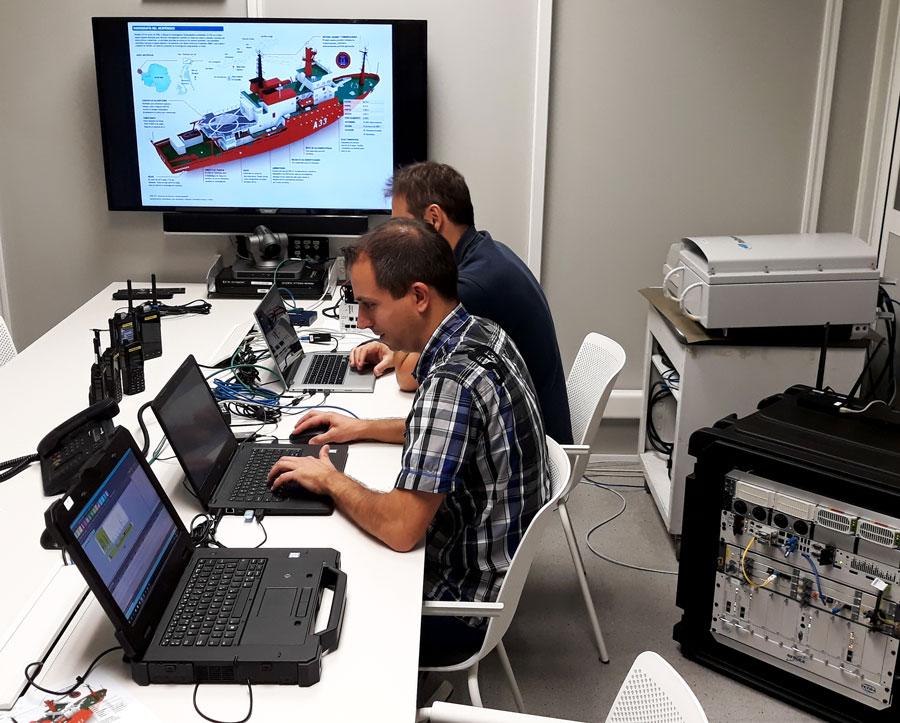Ship Hespérides
Since its launching in 1991, the Spanish Navy’s Oceanographic Research Vessel (BIO) Hespérides has made an annual voyage to the Antarctic during the southern summers, providing the necessary logistical support to the crews of the Spanish Antarctic Bases, while carrying out a series of scientific campaigns of different kinds.
The vessel, the only Spanish ship designed to carry out multidisciplinary scientific research, faced the 2018-2019 Antarctic campaign with a number of research projects, including the Galileo PRS project, which aimed to create a demonstrator to validate safe satellite navigation.

To carry out their research, the scientists went ashore where they placed a receiver of Galileo’s PRS signal, and from there, they had to send this information to a server installed on board the ship Hespérides for processing. A secure communication system was needed between the PRS terminal and the ship’s server.
In addition, the solution was intended to support voice communications for the research staff and crew members on board the Hespérides. In addition to all these requirements, Teltronic’s engineers also had to deal with the extreme environmental conditions found in the Antarctic, and the fact that the equipment had to be installed on a ship, where space is very limited.
Finally, the communications solution chosen was a hybrid system, which would become the first converged narrowband (TETRA) and broadband (LTE) radio communication system (with a single network management system and control node) to be put into operation worldwide. Teltronic provided a complete solution based on its eNEBULA communications infrastructure, including the central node, as well as the TETRA and LTE base stations that were installed on the Hespérides and that provided coverage of the area of operation.
LTE access allowed real-time transmission to Hesperides of the positioning data transmitted by Galileo and received on the ground by the PRS receiver, while TETRA technology supported voice communications.



